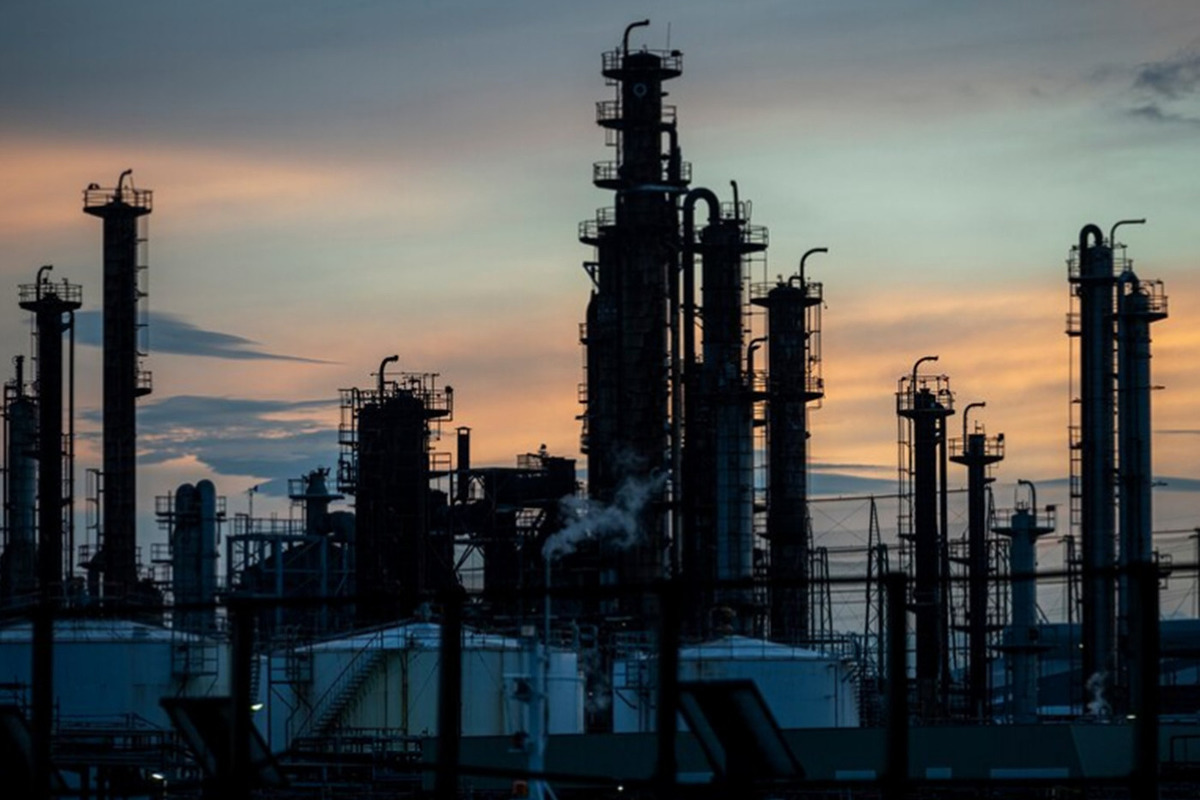Economists have assessed the extent of damage after drone attacks on Russian refineries
[ad_1]

In Russia, approximately a tenth of fuel production has been paralyzed. Western analysts agree on this when assessing the scale of damage from drone strikes on oil refineries in mid-March. In many ways, their calculations are speculative because there are no details of the incidents. The companies that own the attacked refineries do not disclose which equipment has failed, what the extent of the damage is, and what the expected recovery time is.
Today, 13% of the total capacity of existing primary oil refining units at Russian refineries are in emergency downtime mode, Reuters has calculated. In turn, Bloomberg cites estimates from the international energy group Gunvor and JP Morgan Chase bank, according to which the losses of the Russian oil industry amounted to 600 thousand and 900 thousand barrels per day, respectively.
Visible confirmation of the fall in production volumes was the jump in wholesale prices for gasoline and diesel fuel. On Monday, March 18, a ton of AI-95 on the St. Petersburg International Commodity and Raw Materials Exchange cost 63,361 rubles – a record high price since September and 12% more than in early March. The price of AI-92 reached its maximum since October – 50,957 rubles per ton, and the price of winter diesel – since November (65,481 per ton).
In this case, two important circumstances should be taken into account: firstly, the largest Russian refineries, which produce high-quality motor fuel for the domestic market, were hit, and secondly, this happened on the eve of spring sowing. “We need to maintain a sufficient amount of reserves of petroleum products, because we have a sowing season ahead,” said the head of the Ministry of Energy Nikolai Shulginov at a meeting in the State Duma. “And the Ministry of Agriculture and I are working on this, we plan to approve the supply schedule.”
According to BitRiver Communications Director, economist Andrei Loboda, the damage figures from Gunvor and JP Morgan Chase look overestimated. Moreover, both of these organizations do not operate in Russia. The figure of 13% of idle capacity from Reuters also raises doubts. If this were really the case, the affected oil companies would already be knocking on the doorsteps of the Ministry of Energy, demanding an increase in damper subsidies or some other preferences. But nothing like that happens.
“Accordingly,” Loboda argues, “the assessments of Western analysts should at least be divided in two. Most likely, 5-7% of the total capacity was out of order. A fuel shortage certainly does not threaten the country, which, in addition to 26 large refineries, also has at its disposal separate mini-enterprises of this profile. The forced downtime of some of the plants (it may take six months to restore) can be compensated by an increase in fuel supplies to the domestic market by other segments of this industry.”
Of course, attacks on Russian refineries are a serious problem for the energy industry – it is dangerous to underestimate their impact, notes Artem Deev, head of the analytical department at AMarkets. However, according to him, the authorities were prepared for such a turn of events, having previously introduced a temporary ban on fuel exports and formed sufficient reserves in storage facilities. The expert is confident that the domestic market will avoid a deficit in the next six months. Yes, given the upcoming sowing campaign, retail prices in some regions may jump, but nothing more. As for the time frame for repairing the affected refineries, any estimate is obviously unrealistic, since the exact scale of the faults is not known. It is also important, Deev argues, that scheduled plant repairs are scheduled for the spring. Those enterprises that were not attacked may temporarily postpone these plans in order to “stand in” for the affected refineries.
“It is impossible to obtain a reliable picture of the damage: the companies that own the refineries themselves do not comment on such things. In the West, estimates vary: some say about 10%, and others about 13% of failed capacities, says Igor Yushkov, an expert at the Financial University under the Government of the Russian Federation. – It is not clear what figures were taken into account – either actual production volumes, or potential (maximum permissible). For example, when it comes to producing diesel fuel, Russian refineries are traditionally underutilized, that is, they produce less than they can, since this is not economically feasible.”
There is no question of a deficit yet; the country as a whole provides itself with fuel. In particular, about 50% of diesel fuel is exported; accordingly, some of it can be redirected from the export direction to the domestic market. The same cannot be done with gasoline, which in Russia is produced exactly as much as it is consumed. Plus, Yushkov notes, it is possible to increase the load at unaffected refineries and thereby replenish the lost capacity. The main bottleneck is now the transport question: how quickly can it be possible to transfer volumes of petroleum products from one region to another? Last year, the fuel crisis worsened largely because, due to transport problems, agricultural consumers did not receive diesel fuel for their equipment on time, both during the sowing and harvesting campaigns.
“A solution could be to increase the fuel damper (subsidies for refineries), which would curb the dynamics of wholesale gasoline prices, which traditionally rise during the summer holidays. And the utilization of available refineries would increase. Plus, the state should think about easing the tax burden (fiscal benefits) for those oil companies whose plants are out of order. And, of course, all these measures make no sense if oil workers are not provided with air defense equipment,” sums up Nikita Maslennikov, a leading expert at the Center for Political Technologies.
[ad_2]
Source link






